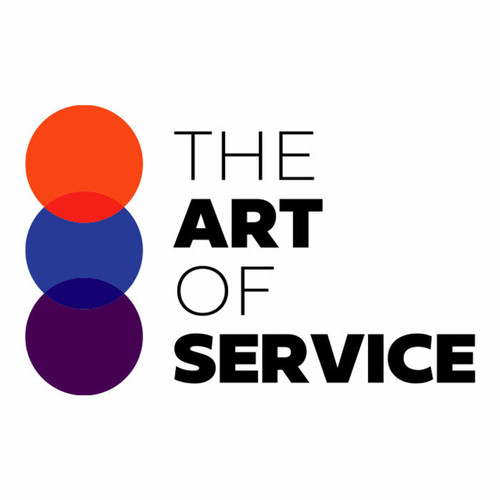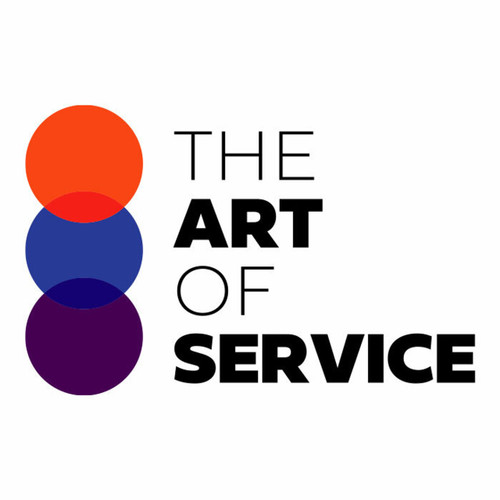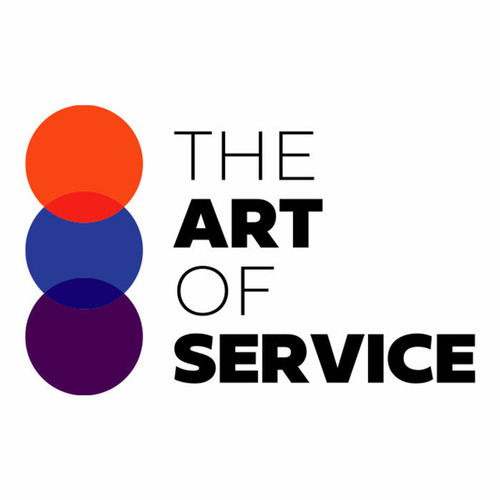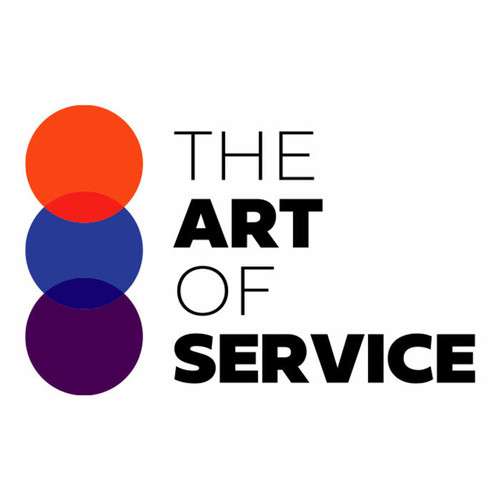Are you tired of sifting through endless resources to find the most important questions to ask when it comes to reducing your attack surface? Look no further, because we have the ultimate solution for you.
Introducing our Attack Surface and Attack Surface Reduction Knowledge Base.
This comprehensive dataset contains 1567 prioritized requirements, solutions, benefits, results, and real-life examples of successful attack surface reduction strategies.
What sets our Knowledge Base apart from competitors and alternatives is its depth and relevance.
We have curated only the most essential and urgent questions, ensuring that you get results fast.
Our team of experts has done all the hard work for you, saving you time and effort in your research process.
As a professional in the cybersecurity field, you know the importance of staying ahead of potential threats.
Our Attack Surface and Attack Surface Reduction dataset is specifically designed for professionals like you, who need immediate and reliable information to protect their systems.
Our product is easy to use, making it suitable for beginners as well as experienced professionals.
And since it′s a DIY and affordable alternative, you have the power to take control of your own attack surface reduction strategy without breaking the bank.
Let′s talk about the details.
Our Knowledge Base covers a wide range of attack surface reduction tactics and techniques.
From vulnerability scanning to access control measures, we have it all.
And unlike semi-related products, we focus solely on attack surface reduction, providing you with a more comprehensive and specialized solution.
But the real benefits of our product lie in its ability to help you achieve tangible results.
By following our recommended strategies and tactics, you can significantly reduce your attack surface and enhance your overall cybersecurity posture.
And with real-life case studies and use cases, you can see firsthand how our product has helped businesses just like yours.
We understand that cybersecurity is crucial for businesses, which is why we have made our Knowledge Base accessible at an affordable cost.
With our product, you can save thousands of dollars in potential damages caused by cyber attacks.
Of course, we believe it′s essential to highlight both the pros and cons of our product.
On the one hand, you have a comprehensive and reliable dataset at your disposal.
On the other, you may need to invest some time and effort to implement our recommended strategies.
But trust us, the payoffs are well worth it.
In summary, our Attack Surface and Attack Surface Reduction Knowledge Base is the ultimate solution for professionals looking to enhance their cybersecurity defenses.
Don′t just take our word for it, try it out for yourself and see the results firsthand.
Take advantage of this valuable resource today and protect your systems from potential threats.
Discover Insights, Make Informed Decisions, and Stay Ahead of the Curve:
Key Features:
Comprehensive set of 1567 prioritized Attack Surface requirements. - Extensive coverage of 187 Attack Surface topic scopes.
- In-depth analysis of 187 Attack Surface step-by-step solutions, benefits, BHAGs.
- Detailed examination of 187 Attack Surface case studies and use cases.
- Digital download upon purchase.
- Enjoy lifetime document updates included with your purchase.
- Benefit from a fully editable and customizable Excel format.
- Trusted and utilized by over 10,000 organizations.
- Covering: Wireless Security Network Encryption, System Lockdown, Phishing Protection, System Activity Logs, Incident Response Coverage, Business Continuity, Incident Response Planning, Testing Process, Coverage Analysis, Account Lockout, Compliance Assessment, Intrusion Detection System, Patch Management Patch Prioritization, Media Disposal, Unsanctioned Devices, Cloud Services, Communication Protocols, Single Sign On, Test Documentation, Code Analysis, Mobile Device Management Security Policies, Asset Management Inventory Tracking, Cloud Access Security Broker Cloud Application Control, Network Access Control Network Authentication, Restore Point, Patch Management, Flat Network, User Behavior Analysis, Contractual Obligations, Security Audit Auditing Tools, Security Auditing Policy Compliance, Demilitarized Zone, Access Requests, Extraction Controls, Log Analysis, Least Privilege Access, Access Controls, Behavioral Analysis, Disaster Recovery Plan Disaster Response, Anomaly Detection, Backup Scheduling, Password Policies Password Complexity, Off Site Storage, Device Hardening System Hardening, Browser Security, Honeypot Deployment, Threat Modeling, User Consent, Mobile Security Device Management, Data Anonymization, Session Recording, Audits And Assessments, Audit Logs, Regulatory Compliance Reporting, Access Revocation, User Provisioning, Mobile Device Encryption, Endpoint Protection Malware Prevention, Vulnerability Management Risk Assessment, Vulnerability Scanning, Secure Channels, Risk Assessment Framework, Forensics Investigation, Self Service Password Reset, Security Incident Response Incident Handling, Change Default Credentials, Data Expiration Policies, Change Approval Policies, Data At Rest Encryption, Firewall Configuration, Intrusion Detection, Emergency Patches, Attack Surface, Database Security Data Encryption, Privacy Impact Assessment, Security Awareness Phishing Simulation, Privileged Access Management, Production Deployment, Plan Testing, Malware Protection Antivirus, Secure Protocols, Privacy Data Protection Regulation, Identity Management Authentication Processes, Incident Response Response Plan, Network Monitoring Traffic Analysis, Documentation Updates, Network Segmentation Policies, Web Filtering Content Filtering, Attack Surface Reduction, Asset Value Classification, Biometric Authentication, Secure Development Security Training, Disaster Recovery Readiness, Risk Evaluation, Forgot Password Process, VM Isolation, Disposal Procedures, Compliance Regulatory Standards, Data Classification Data Labeling, Password Management Password Storage, Privacy By Design, Rollback Procedure, Cybersecurity Training, Recovery Procedures, Integrity Baseline, Third Party Security Vendor Risk Assessment, Business Continuity Recovery Objectives, Screen Sharing, Data Encryption, Anti Malware, Rogue Access Point Detection, Access Management Identity Verification, Information Protection Tips, Application Security Code Reviews, Host Intrusion Prevention, Disaster Recovery Plan, Attack Mitigation, Real Time Threat Detection, Security Controls Review, Threat Intelligence Threat Feeds, Cyber Insurance Risk Assessment, Cloud Security Data Encryption, Virtualization Security Hypervisor Security, Web Application Firewall, Backup And Recovery Disaster Recovery, Social Engineering, Security Analytics Data Visualization, Network Segmentation Rules, Endpoint Detection And Response, Web Access Control, Password Expiration, Shadow IT Discovery, Role Based Access, Remote Desktop Control, Change Management Change Approval Process, Security Requirements, Audit Trail Review, Change Tracking System, Risk Management Risk Mitigation Strategies, Packet Filtering, System Logs, Data Privacy Data Protection Policies, Data Exfiltration, Backup Frequency, Data Backup Data Retention, Multi Factor Authentication, Data Sensitivity Assessment, Network Segmentation Micro Segmentation, Physical Security Video Surveillance, Segmentation Policies, Policy Enforcement, Impact Analysis, User Awareness Security Training, Shadow IT Control, Dark Web Monitoring, Firewall Rules Rule Review, Data Loss Prevention, Disaster Recovery Backup Solutions, Real Time Alerts, Encryption Encryption Key Management, Behavioral Analytics, Access Controls Least Privilege, Vulnerability Testing, Cloud Backup Cloud Storage, Monitoring Tools, Patch Deployment, Secure Storage, Password Policies, Real Time Protection, Complexity Reduction, Application Control, System Recovery, Input Validation, Access Point Security, App Permissions, Deny By Default, Vulnerability Detection, Change Control Change Management Process, Continuous Risk Monitoring, Endpoint Compliance, Crisis Communication, Role Based Authorization, Incremental Backups, Risk Assessment Threat Analysis, Remote Wipe, Penetration Testing, Automated Updates
Attack Surface Assessment Dataset - Utilization, Solutions, Advantages, BHAG (Big Hairy Audacious Goal):
Attack Surface
Prioritizing the attack surface involves identifying and focusing on the areas of greatest risk, and implementing mitigation strategies that will result in the biggest risk reduction.
1. Conduct risk assessment: Identify the most critical assets and vulnerabilities to prioritize mitigation efforts.
2. Implement access management controls: Limit access to sensitive data and resources to reduce potential attack surfaces.
3. Regularly update software and systems: By patching vulnerabilities, reduce the potential for exploits to occur.
4. Use network segmentation: Isolate critical systems from less secure parts of the network to limit exposure to potential attacks.
5. Deploy intrusion detection systems: Monitor network traffic and trigger alerts when malicious activity is detected.
6. Utilize threat intelligence: Stay informed about new and emerging threats to proactively protect against them.
7. Train employees on cybersecurity best practices: Educate employees on how to spot and report potential cyber attacks.
8. Consider implementing a risk-based approach: Focus efforts on addressing the most significant risks first.
9. Use multi-factor authentication: Add layers of security by requiring more than just a password for access.
10. Regularly review and update security policies: Ensure that security measures are kept up-to-date with evolving threats.
CONTROL QUESTION: How do you prioritize the risk mitigation efforts to get the greatest reduction in risk?
Big Hairy Audacious Goal (BHAG) for 10 years from now:
Ten years from now, Attack Surface will be the leading global company in providing comprehensive and innovative risk mitigation solutions to organizations of all sizes and industries. With a dedicated team of experts and cutting-edge technology, we aim to reduce the overall risk exposure of our clients by 90%.
To achieve this ambitious goal, we will prioritize the following efforts:
1. Continuously evolving technology: We will invest heavily in research and development to create state-of-the-art risk assessment and management tools. These tools will enable us to proactively identify potential risks and vulnerabilities, taking a data-driven approach to mitigate them.
2. Partnering with industry leaders: We will collaborate with top cybersecurity companies and experts to stay ahead of emerging threats and incorporate their insights into our risk mitigation strategies. This will allow us to provide our clients with the most robust and effective solutions.
3. Focusing on education and training: We believe that education is the key to effective risk mitigation. We will offer comprehensive training programs for our clients to equip them with the necessary skills and knowledge to identify and mitigate risks in their organizations.
4. Customized solutions: Every organization has a unique set of risks and vulnerabilities. Hence, we will tailor our risk mitigation solutions according to the specific needs and requirements of each client. This personalized approach will ensure maximum effectiveness in reducing their risk exposure.
5. Proactive monitoring and response: Our team will constantly monitor our clients′ systems and networks for any potential threats. In case of an attack or breach, we will have a swift and efficient response plan in place to minimize the impact and restore operations as quickly as possible.
By prioritizing these efforts, we are confident that we can achieve our goal of a 90% reduction in risk for our clients within the next 10 years. This will not only solidify our position as a leader in the industry but also make significant strides in creating a safer and more secure digital environment for organizations worldwide.
Customer Testimonials:
"If you`re looking for a dataset that delivers actionable insights, look no further. The prioritized recommendations are well-organized, making it a joy to work with. Definitely recommend!"
"I`m thoroughly impressed with the level of detail in this dataset. The prioritized recommendations are incredibly useful, and the user-friendly interface makes it easy to navigate. A solid investment!"
"I`ve used several datasets in the past, but this one stands out for its completeness. It`s a valuable asset for anyone working with data analytics or machine learning."
Attack Surface Case Study/Use Case example - How to use:
Client Situation:
Our client, a multinational technology company with a significant online presence, was facing increasing cyber threats due to their expanding attack surface. The company had recently expanded its product offerings and entered new markets, leading to a larger digital footprint and a higher risk of cyber attacks. Additionally, the rapid evolution and adoption of new technologies, such as cloud computing and Internet of Things (IoT), had further exposed them to potential cyber security risks.
The company′s senior management recognized the need to prioritize their risk mitigation efforts to reduce their attack surface and protect their sensitive data and intellectual property. However, they lacked a systematic approach to identify and prioritize the areas that presented the greatest risk. Therefore, they engaged our consulting firm to help them develop a risk prioritization strategy and implement it across the organization.
Consulting Methodology:
Our consulting methodology for this project was based on the National Institute of Standards and Technology (NIST) Cybersecurity Framework, which provides a holistic approach to managing cyber security risks. The framework consists of five core functions: Identify, Protect, Detect, Respond, and Recover. Based on these functions, we developed a four-step process to prioritize the client′s risk mitigation efforts:
1. Asset Inventory and Mapping: Our first step was to identify and map all the assets within the organization′s attack surface, including hardware, software, network infrastructure, and data. This included conducting interviews with key stakeholders and reviewing existing documentation to understand the organization′s technology landscape.
2. Threat Assessment: The next step involved evaluating the potential threats to each asset through a combination of quantitative and qualitative analysis. We used industry-specific threat intelligence reports, vulnerability scans, and penetration testing to identify the likelihood and impact of potential attacks.
3. Risk Scoring and Prioritization: Using a risk scoring matrix, we assigned a score to each asset based on the likelihood and impact of a successful cyber attack. The assets with the highest risk scores were prioritized for further analysis and mitigation efforts.
4. Mitigation Plan: Finally, we developed a mitigation plan for all the identified high-risk assets. The plan included detailed remediation strategies, resources required, and timelines for implementation. We also recommended implementing preventive measures, such as regular vulnerability assessments and employee training, to reduce the likelihood of future cyber attacks.
Deliverables:
Our consulting team delivered the following key deliverables to the client throughout the project:
1. Asset Inventory and Mapping Report: This report provided a comprehensive inventory and mapping of the organization′s attack surface, including a description of each asset, its criticality, and its relationship to other assets.
2. Threat Assessment Report: The threat assessment report listed the potential threats identified for each asset, their likelihood, and potential impacts.
3. Risk Scoring Matrix: Our team developed a risk scoring matrix that assigned numerical values to the likelihood and impact of each threat. The matrix helped the client visualize the overall risk level and prioritize their mitigation efforts.
4. Mitigation Plan: The final deliverable was a detailed mitigation plan that included specific strategies and recommendations to address the high-risk assets identified in the previous steps.
Implementation Challenges:
One of the main challenges we faced during the implementation of our risk prioritization strategy was the lack of visibility into the organization′s entire attack surface. The company had grown through mergers and acquisitions, resulting in a complex technology landscape with multiple legacy systems and unaccounted-for assets.
Another challenge was the constant evolution of the cyber threat landscape, making it difficult to accurately assess and prioritize risks. To overcome this challenge, our team collaborated with industry experts and obtained the latest threat intelligence reports to ensure the accuracy of our assessments.
KPIs:
To measure the effectiveness of our risk prioritization strategy, we identified the following key performance indicators (KPIs):
1. Number of High-Risk Assets Remediated: The total number of high-risk assets identified and successfully remediated according to our mitigation plan.
2. Time to Remediate: The time taken to implement the remediation strategies for each high-risk asset.
3. Risk Score Reduction: The overall reduction in risk scores for all the assets within the organization′s attack surface after the implementation of our mitigation plan.
Management Considerations:
In addition to the technical aspects, there were several management considerations that were crucial to the success of this project. These included:
1. Senior Management Support: Obtaining buy-in and support from senior management was crucial in ensuring the successful implementation of our risk prioritization strategy. We engaged with the company′s leadership throughout the project to keep them informed and seek their inputs on critical decisions.
2. Resource Allocation: Implementing the mitigation plan required the allocation of resources, including budget, staff, and technology, which needed to be carefully planned and managed.
3. Training and Awareness: We recommended that the company invest in training and awareness programs for their employees to improve their understanding of cyber security risks and their roles in mitigating them.
Conclusion:
By following a systematic approach based on the NIST Cybersecurity Framework, our consulting team was able to help our client identify and prioritize their risk mitigation efforts effectively. As a result, the company was able to reduce its attack surface and protect its critical assets from potential cyber attacks. This allowed them to have a more proactive stance towards cyber security risks, helping them to stay ahead of evolving threats in the constantly changing digital landscape.
Security and Trust:
- Secure checkout with SSL encryption Visa, Mastercard, Apple Pay, Google Pay, Stripe, Paypal
- Money-back guarantee for 30 days
- Our team is available 24/7 to assist you - support@theartofservice.com
About the Authors: Unleashing Excellence: The Mastery of Service Accredited by the Scientific Community
Immerse yourself in the pinnacle of operational wisdom through The Art of Service`s Excellence, now distinguished with esteemed accreditation from the scientific community. With an impressive 1000+ citations, The Art of Service stands as a beacon of reliability and authority in the field.Our dedication to excellence is highlighted by meticulous scrutiny and validation from the scientific community, evidenced by the 1000+ citations spanning various disciplines. Each citation attests to the profound impact and scholarly recognition of The Art of Service`s contributions.
Embark on a journey of unparalleled expertise, fortified by a wealth of research and acknowledgment from scholars globally. Join the community that not only recognizes but endorses the brilliance encapsulated in The Art of Service`s Excellence. Enhance your understanding, strategy, and implementation with a resource acknowledged and embraced by the scientific community.
Embrace excellence. Embrace The Art of Service.
Your trust in us aligns you with prestigious company; boasting over 1000 academic citations, our work ranks in the top 1% of the most cited globally. Explore our scholarly contributions at: https://scholar.google.com/scholar?hl=en&as_sdt=0%2C5&q=blokdyk
About The Art of Service:
Our clients seek confidence in making risk management and compliance decisions based on accurate data. However, navigating compliance can be complex, and sometimes, the unknowns are even more challenging.
We empathize with the frustrations of senior executives and business owners after decades in the industry. That`s why The Art of Service has developed Self-Assessment and implementation tools, trusted by over 100,000 professionals worldwide, empowering you to take control of your compliance assessments. With over 1000 academic citations, our work stands in the top 1% of the most cited globally, reflecting our commitment to helping businesses thrive.
Founders:
Gerard Blokdyk
LinkedIn: https://www.linkedin.com/in/gerardblokdijk/
Ivanka Menken
LinkedIn: https://www.linkedin.com/in/ivankamenken/







